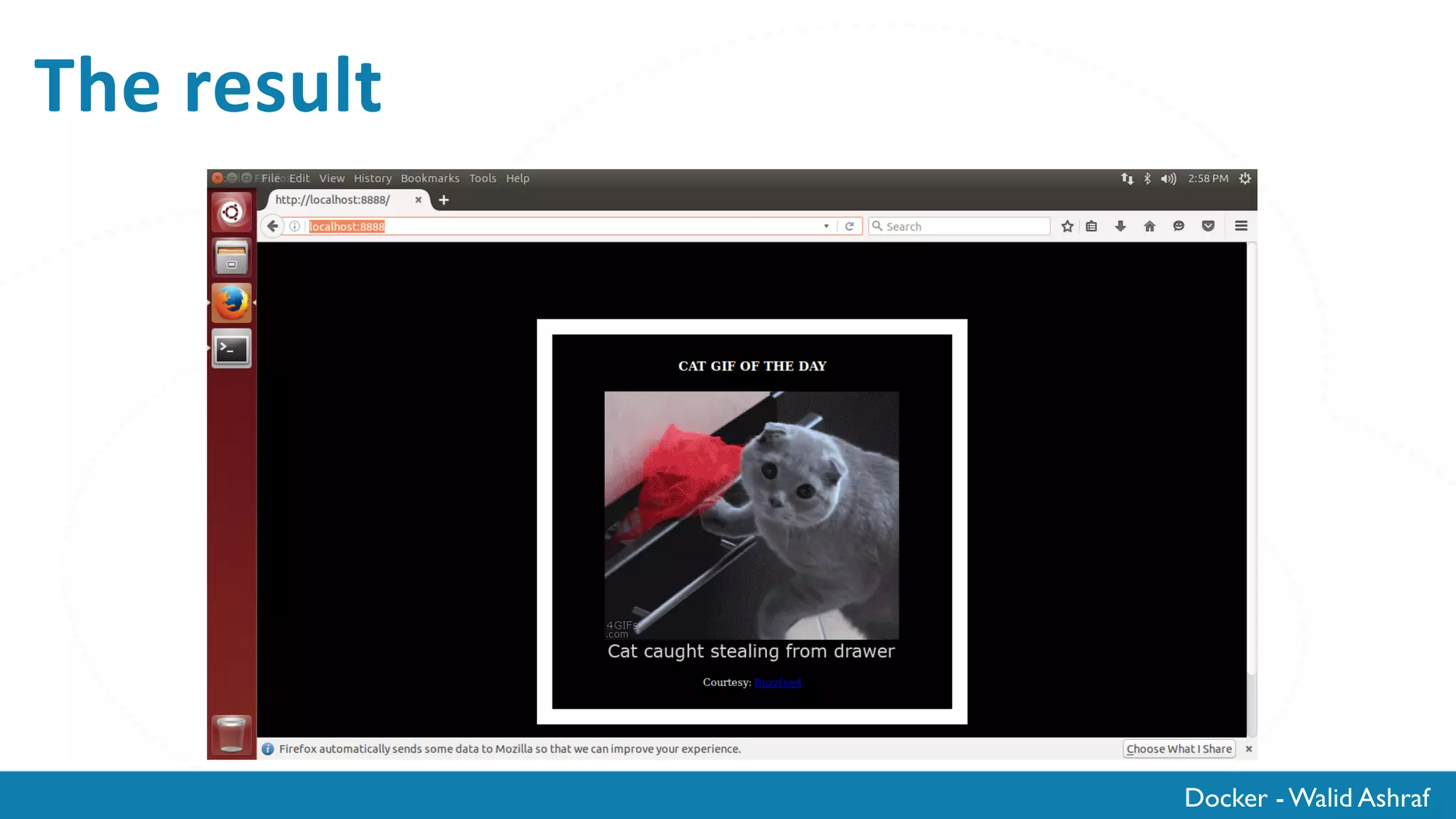The document discusses how to create Dockerfiles to containerize web applications. It provides instructions for creating Dockerfiles for both Node.js and Python web applications. For Node.js, it shows how to create a Dockerfile that copies local code and dependencies into an image based on an Alpine Node image and exposes port 8080. For Python, it demonstrates a Dockerfile that copies code and dependencies into an Alpine image, installs Python and pip, exposes port 5000, and runs a Flask app.

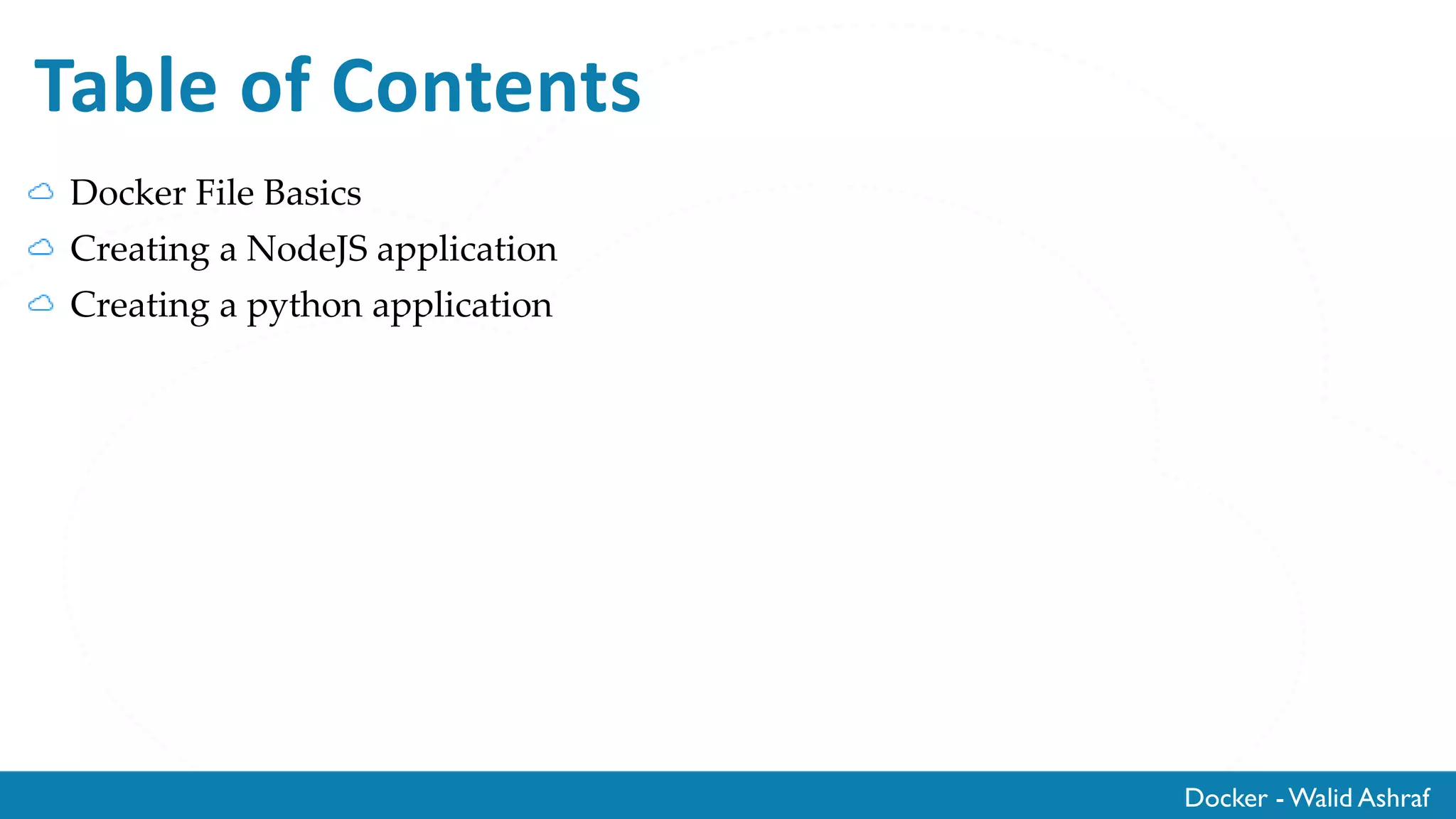
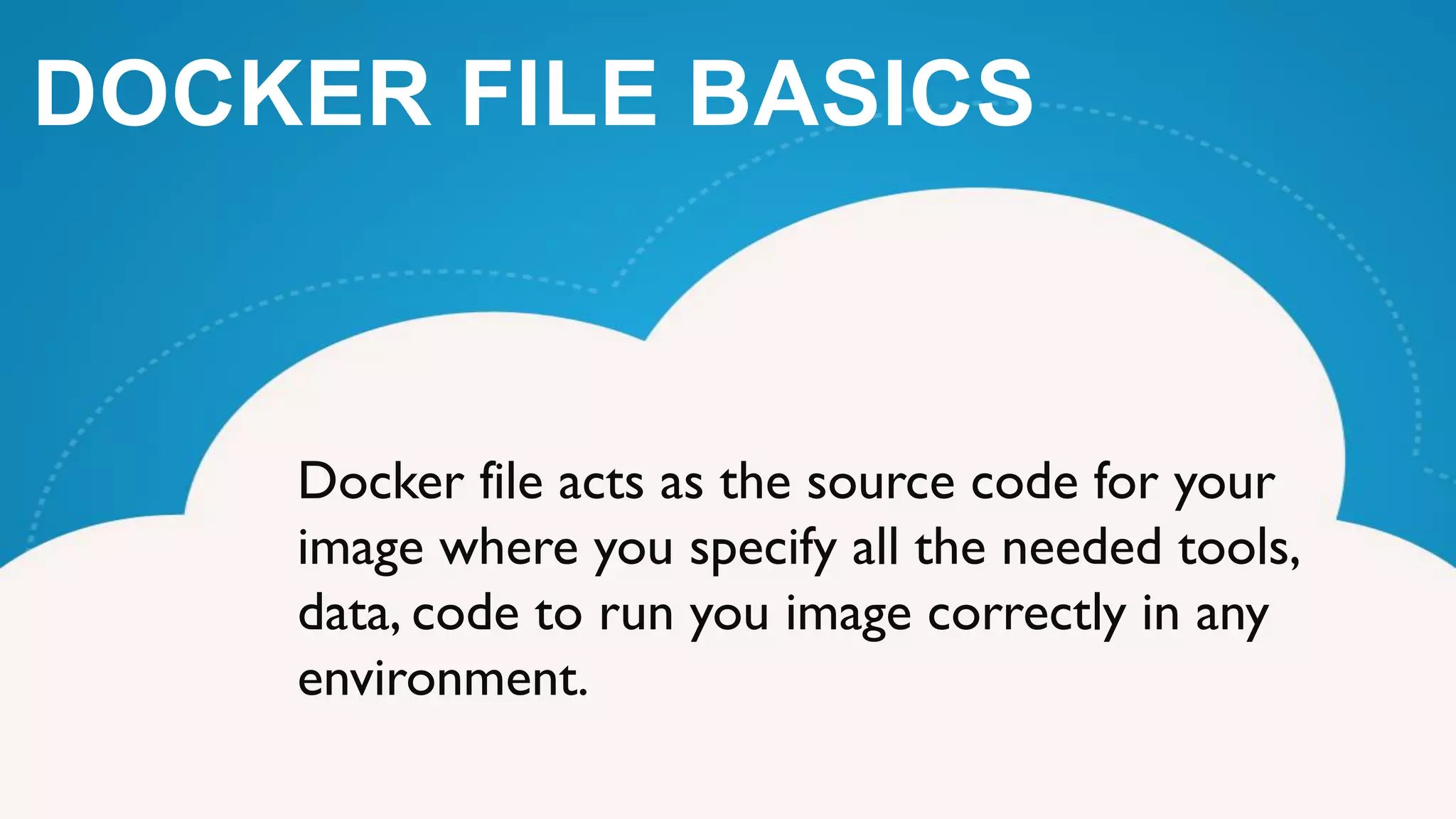
![Docker - Walid Ashraf
Docker file basics
From:
• Base Image
• Usage
• FROM <image>
Maintainer
• Who is the Image creator
• Usage
• MAINTAINER <Name>
WORKDIR
• Sets the start directory for the container where the run and the CMD instructions are executed.
• Usage
• WORKDIR /path/to/workdir
RUN
• The RUN instruction will execute any commands in a new layer on top of the current image and commit the results.The resulting committed image will be
used for the next step in the Dockerfile.
• Usage
• RUN <command> (the command is run in a shell - /bin/sh -c - shell form)
• RUN ["executable", "param1", "param2"] (exec form)](https://image.slidesharecdn.com/3-dockerizingwebapplication-161022100324/75/dockerizing-web-application-4-2048.jpg)
![Docker - Walid Ashraf
Docker file basics
CMD
• The CMD Command is used as a default entry point to container.And if more than one is added the last one only will take effect
• Usage
• CMD ["executable","param1","param2"] (exec form, this is the preferred form)
• CMD ["param1","param2"] (as default parameters to ENTRYPOINT)
• CMD command param1 param2 (shell form)
COPY
• Copies files from the host file system to the image file system.
• Usage
• COPY <src>... <dest>
• COPY ["<src>",... "<dest>"] (this form is required for paths containing whitespace)
ADD
• The add file is similar to the copy but can handle both tar files and remote URLs
• Usage
• ADD <src>... <dest>
• ADD ["<src>",... "<dest>"] (this form is required for paths containing whitespace)
ENV
• Sets some environment variables for the container
• Usage
• ENV <key> <value> only one perline
• ENV <key>=<value> ... allows multiple per line](https://image.slidesharecdn.com/3-dockerizingwebapplication-161022100324/75/dockerizing-web-application-5-2048.jpg)
![Docker - Walid Ashraf
Docker file basics
EXPOSE
• This allows the container ports to be accessed from the global ports. Note that Port
mapping has to be specified directly at creation time using the –p or –P commands
• Usage
• EXPOSE <port> [<port>...]
Vloume
• TheVOLUME instruction creates a mount point with the specified name and marks it
as holding externally mounted volumes from native host or other containers.
• Usage
• VOLUME ["/data"]](https://image.slidesharecdn.com/3-dockerizingwebapplication-161022100324/75/dockerizing-web-application-6-2048.jpg)
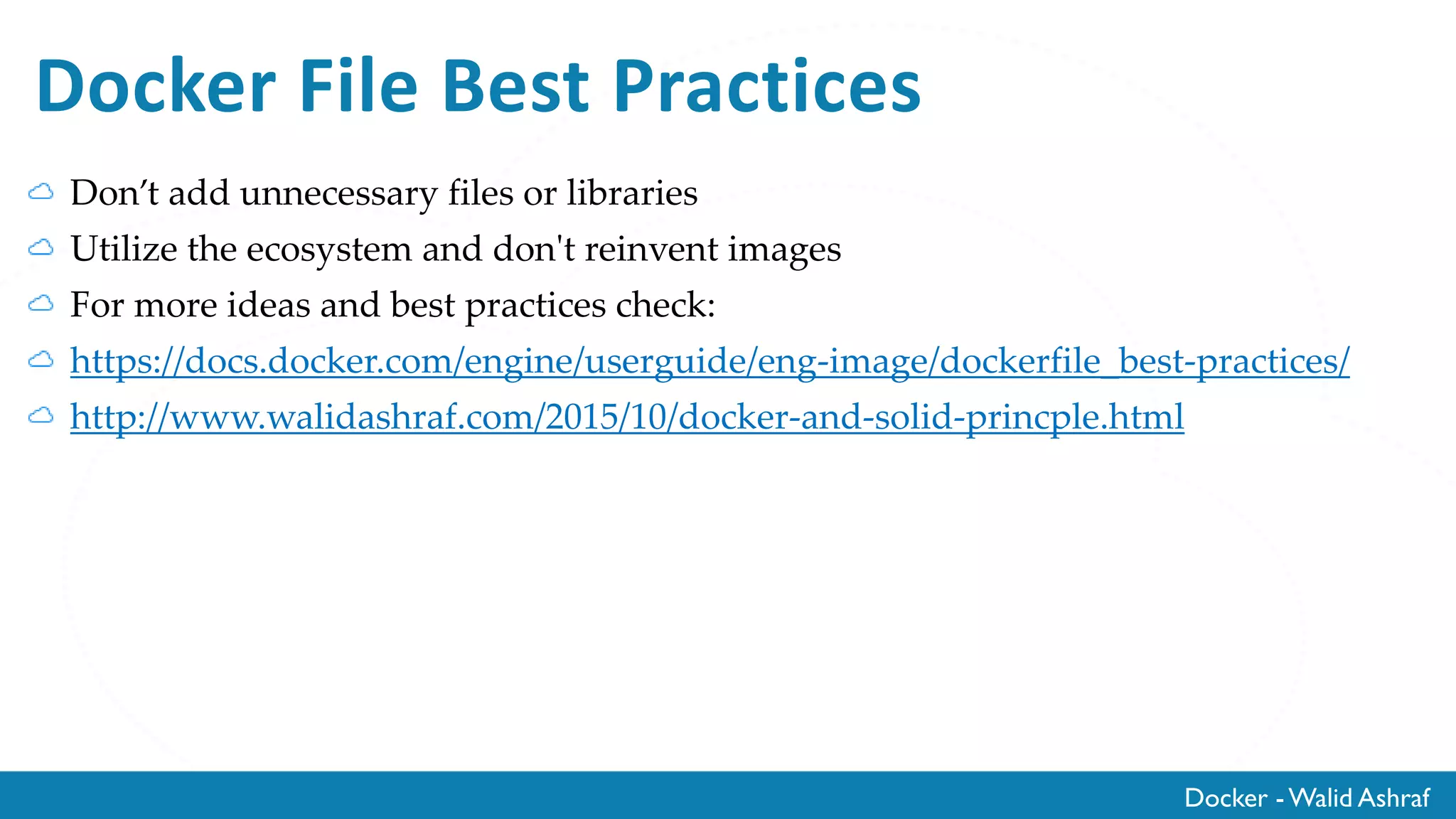
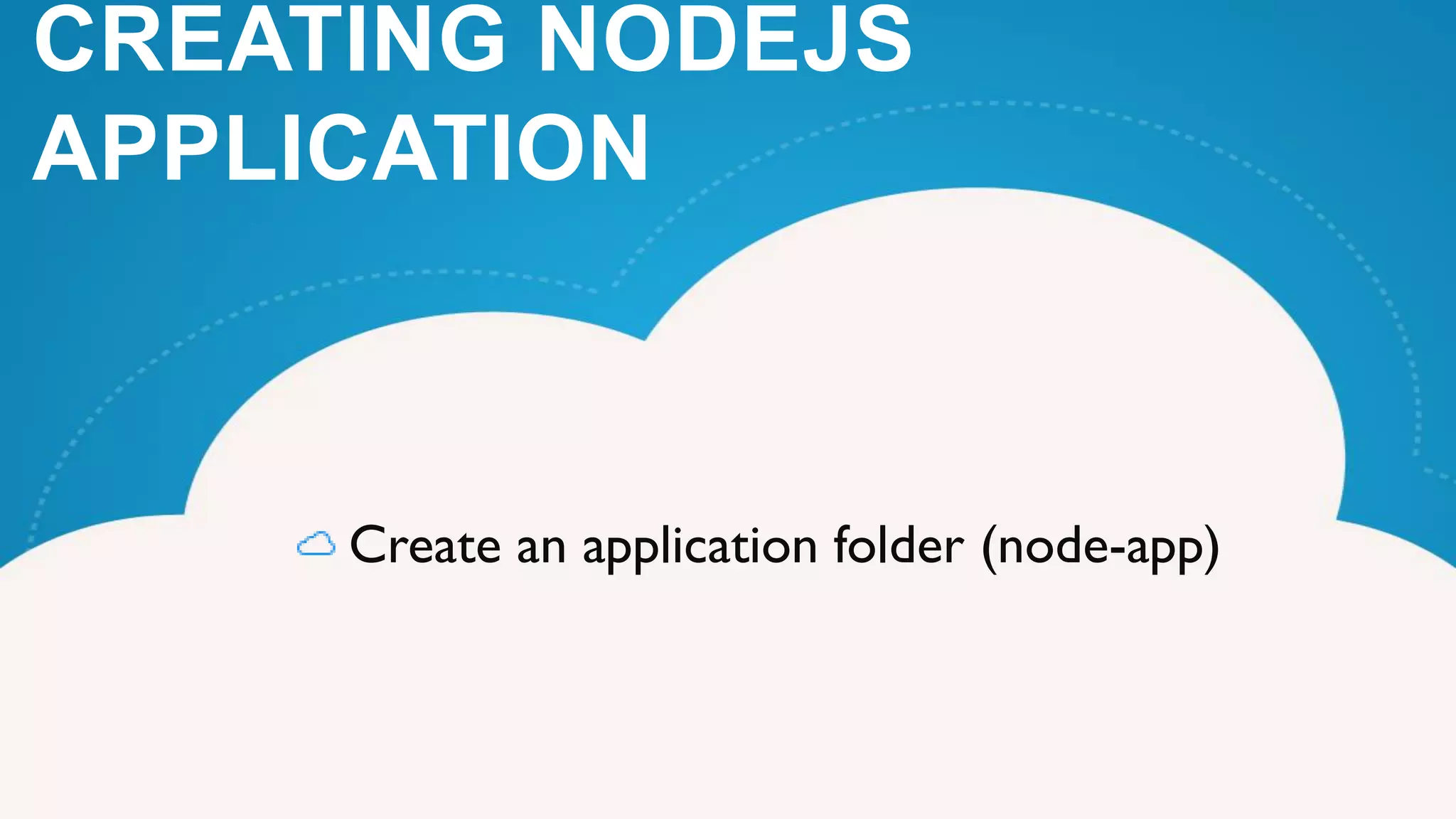
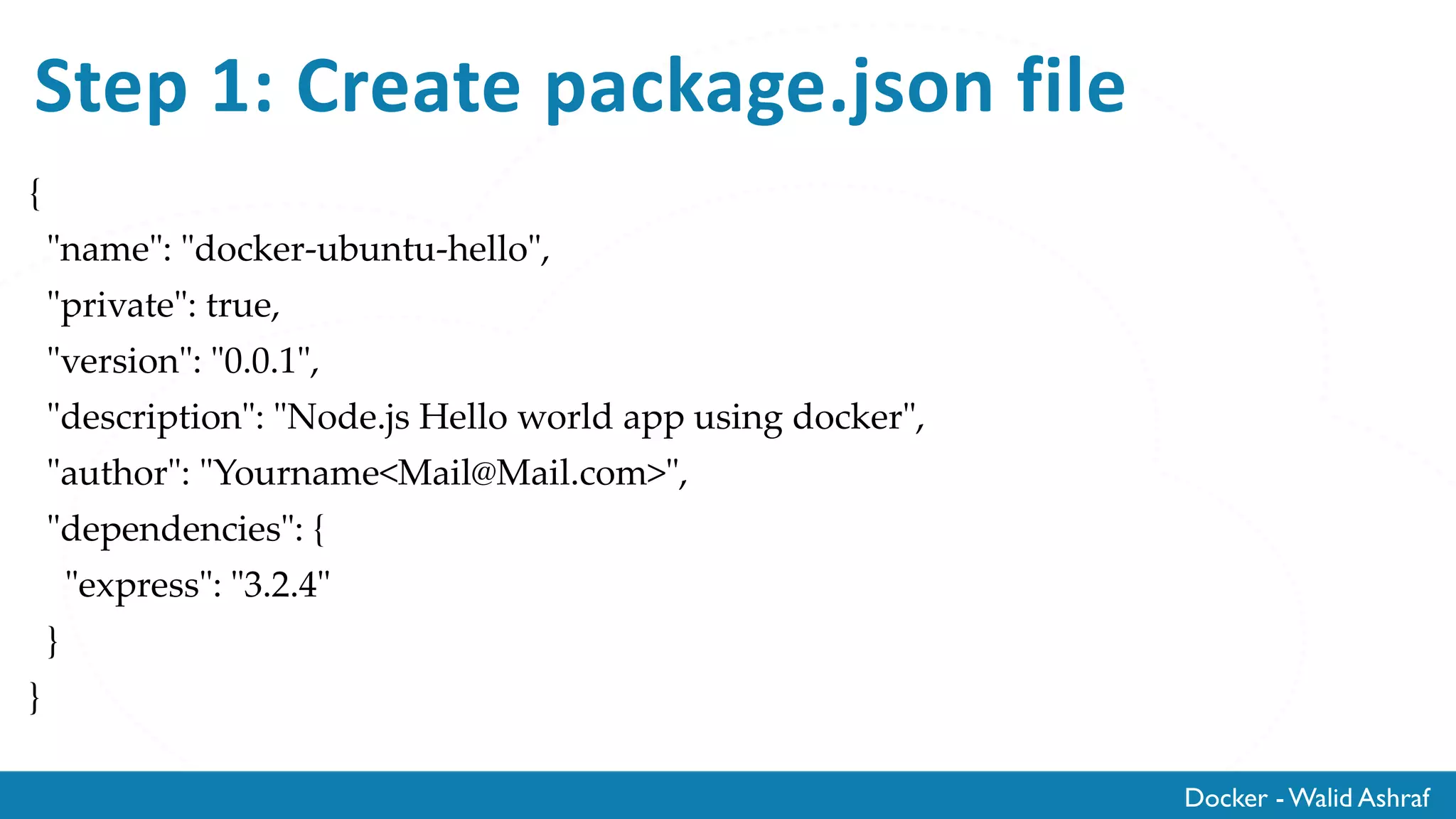
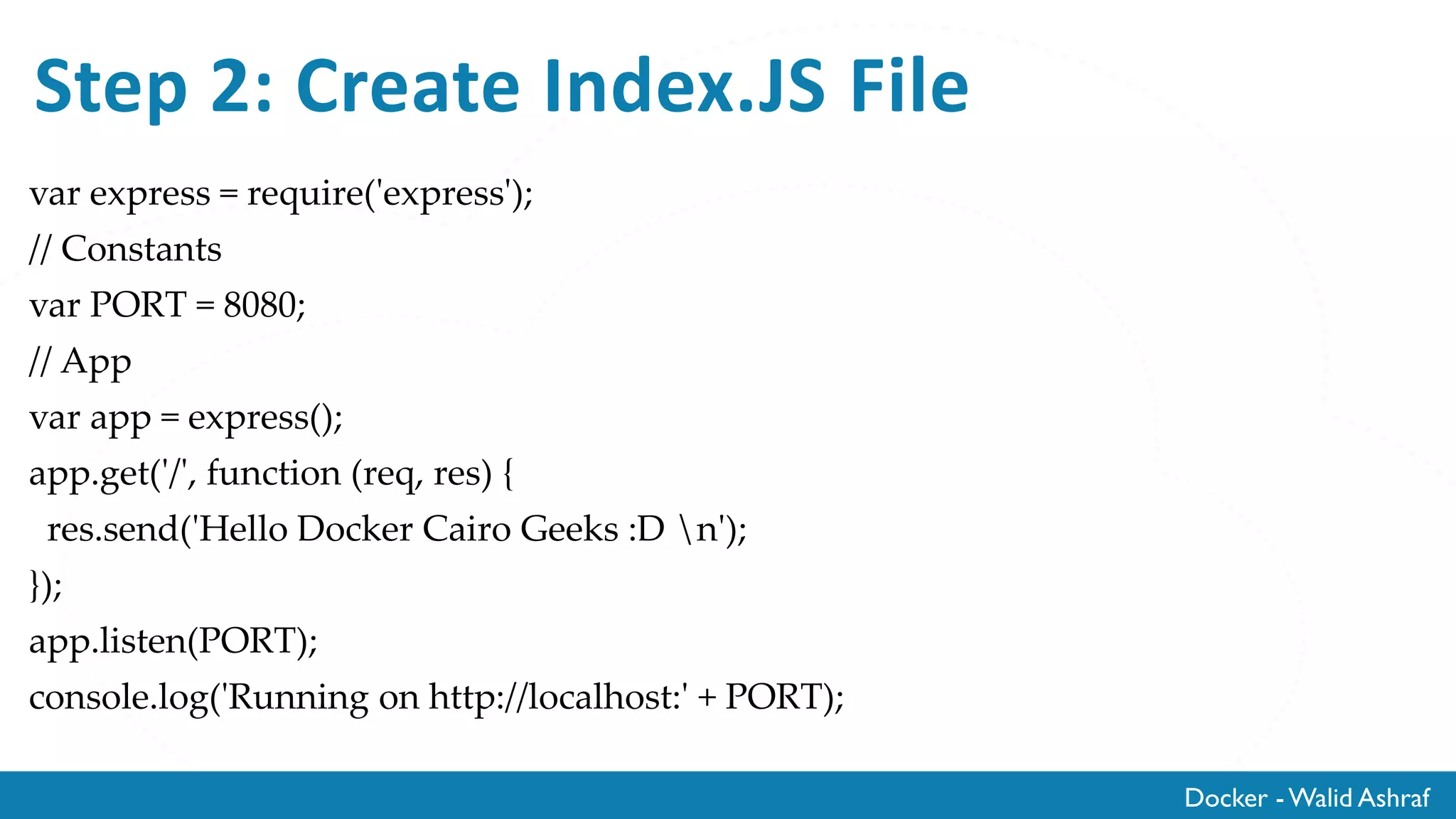
![Docker - Walid Ashraf
Step 3: Create A DockerFile
# Aminimal alpine node image
FROM mhart/alpine-node
# Get The Code
COPY . /src
# Install app dependencies
RUN cd /src; npm install
#Expose a port
EXPOSE 8080
#The Container Start command
CMD ["node", "/src/index.js"]](https://image.slidesharecdn.com/3-dockerizingwebapplication-161022100324/75/dockerizing-web-application-11-2048.jpg)
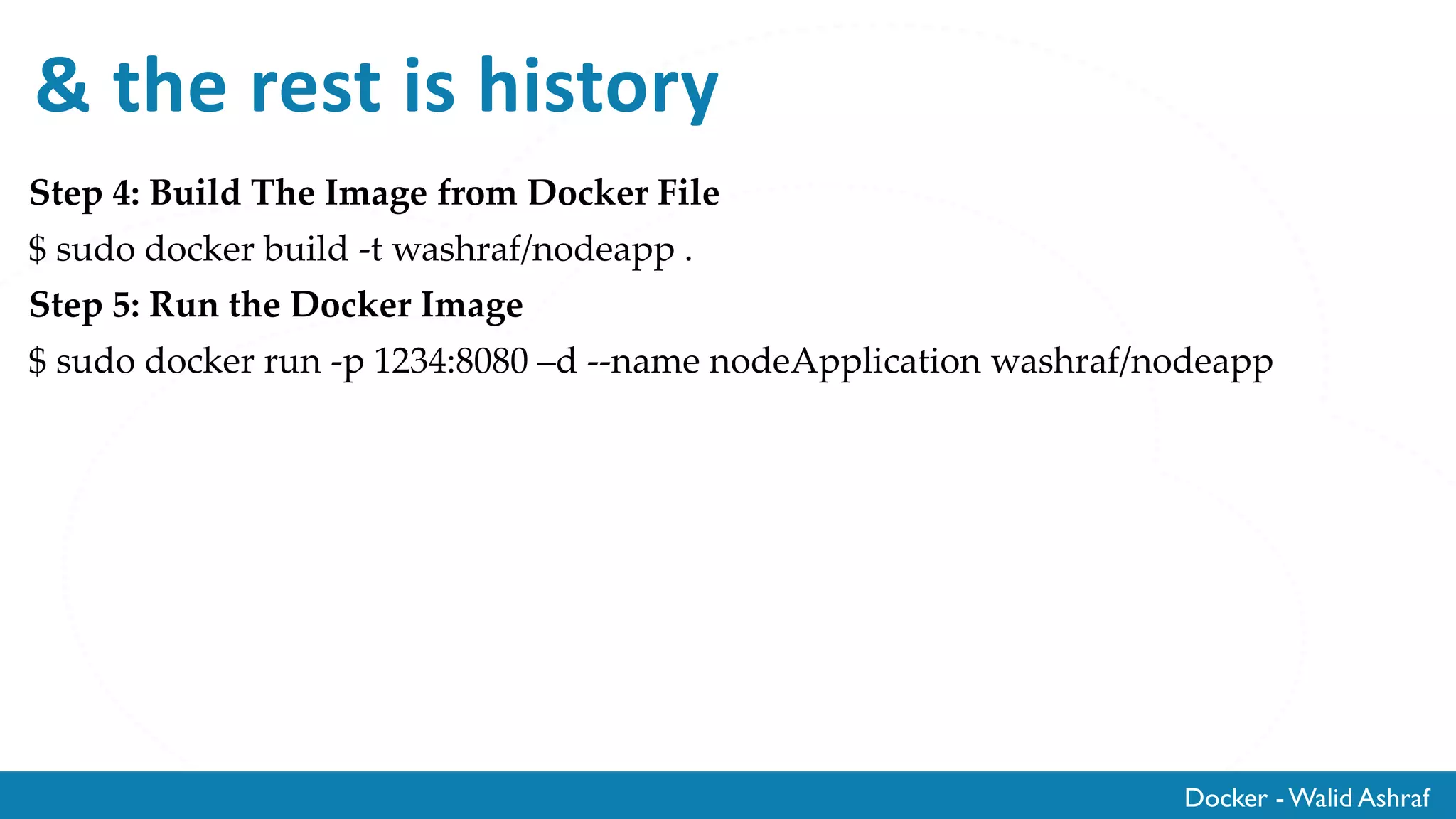
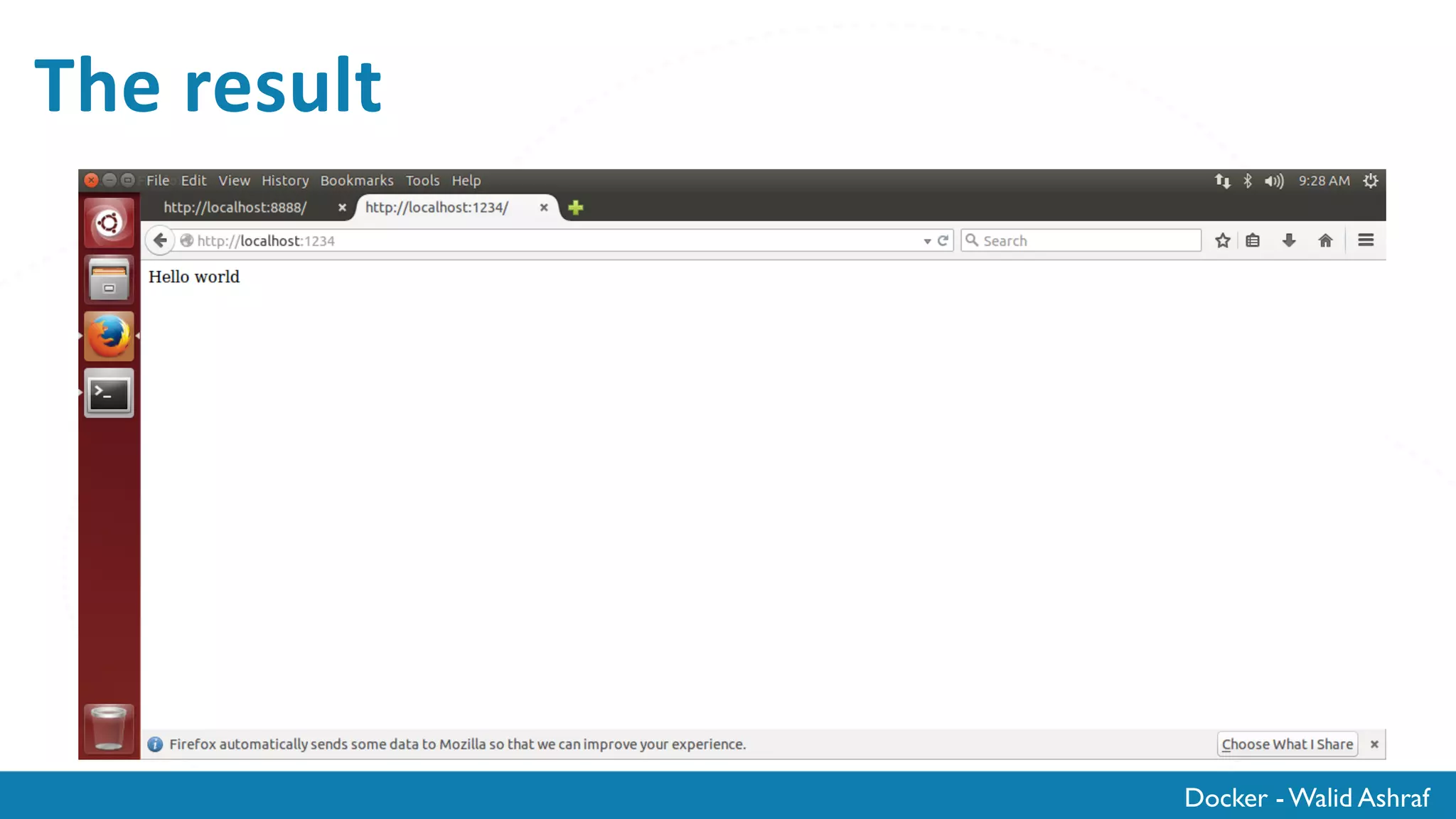
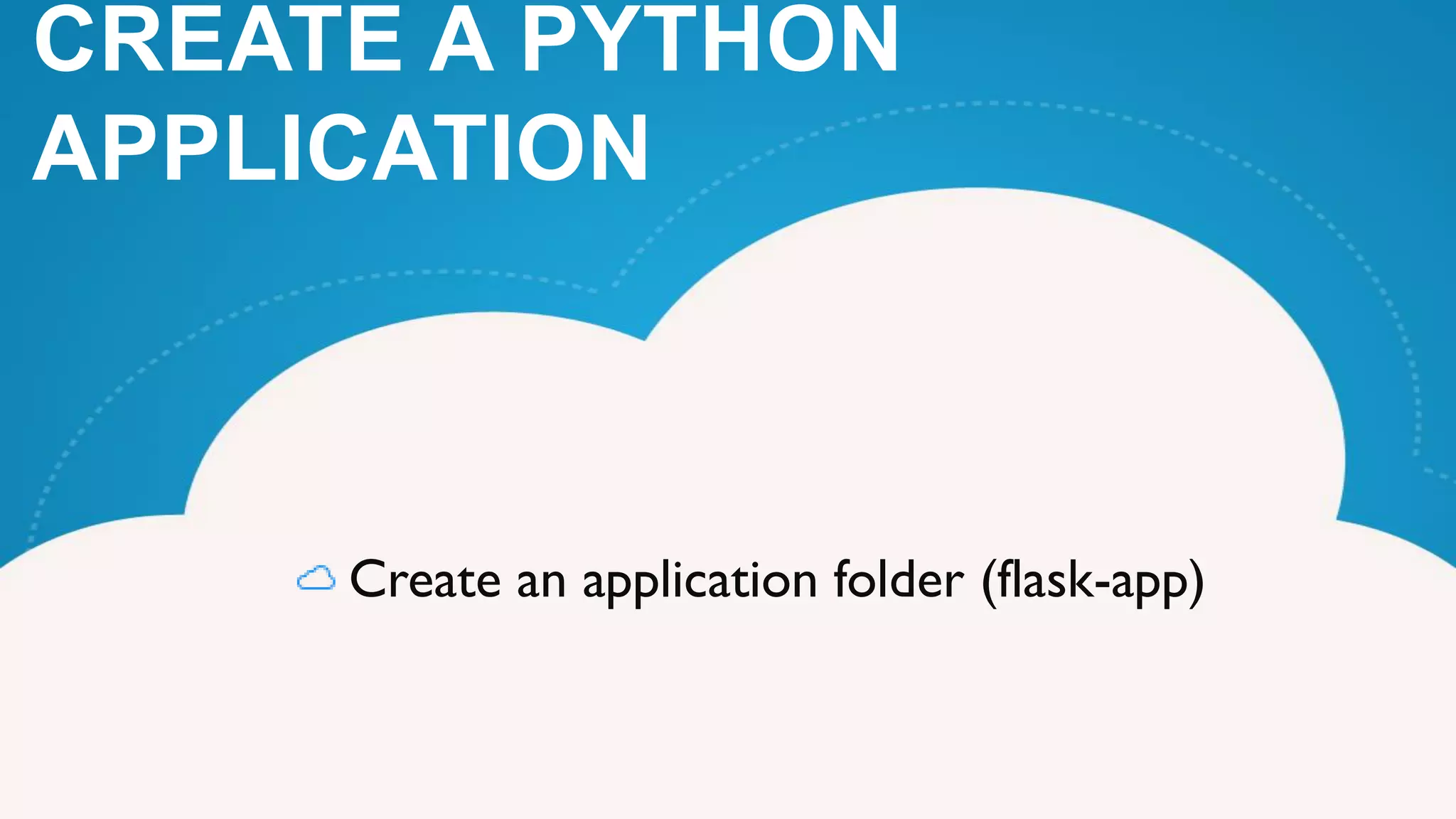
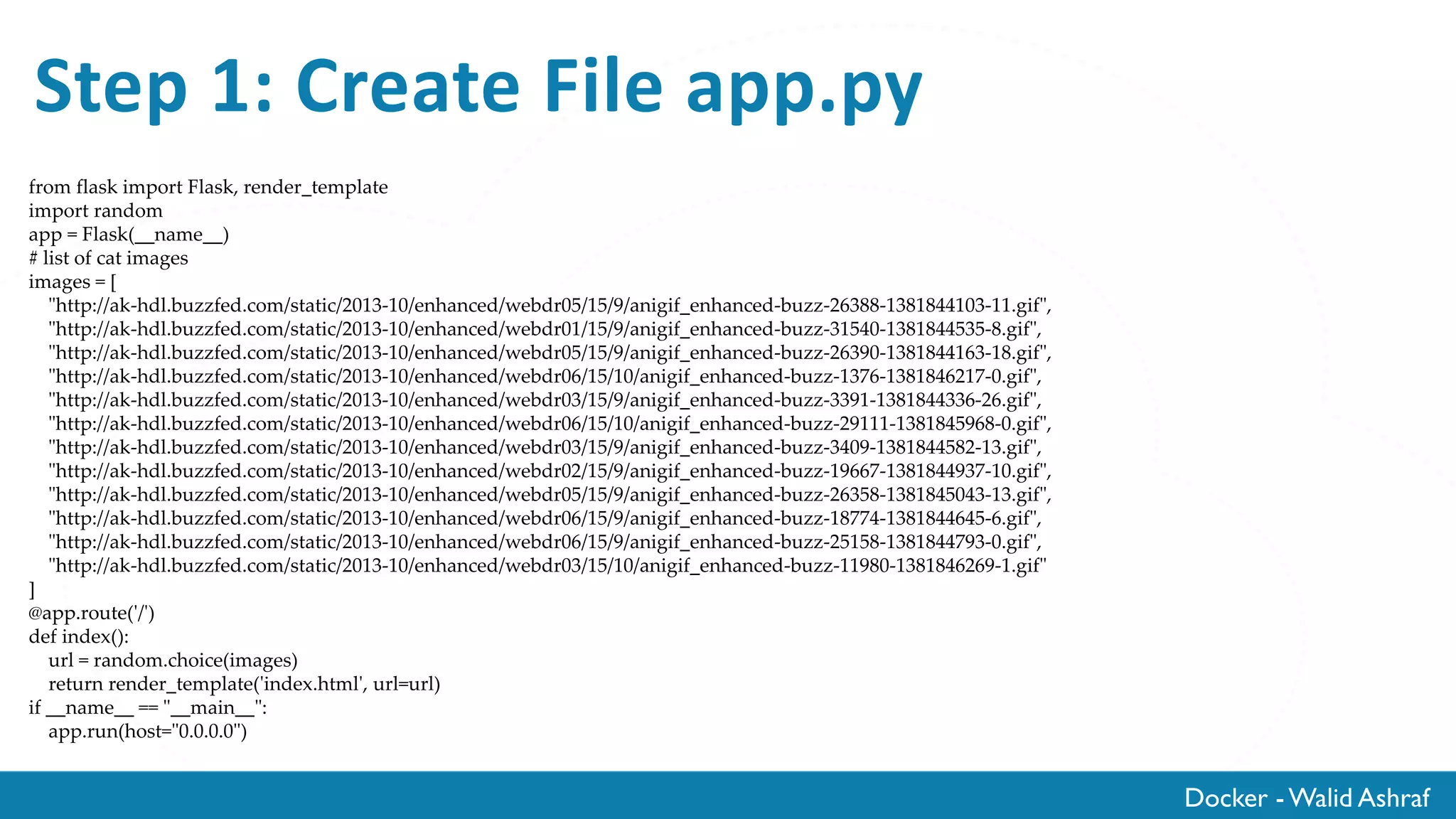
![Docker - Walid Ashraf
Step 1: Create File app.py
from flask import Flask, render_template
import random
app = Flask(__name__)
# list of cat images
images = [
"http://ak-hdl.buzzfed.com/static/2013-10/enhanced/webdr05/15/9/anigif_enhanced-buzz-26388-1381844103-11.gif",
"http://ak-hdl.buzzfed.com/static/2013-10/enhanced/webdr01/15/9/anigif_enhanced-buzz-31540-1381844535-8.gif",
"http://ak-hdl.buzzfed.com/static/2013-10/enhanced/webdr05/15/9/anigif_enhanced-buzz-26390-1381844163-18.gif",
"http://ak-hdl.buzzfed.com/static/2013-10/enhanced/webdr06/15/10/anigif_enhanced-buzz-1376-1381846217-0.gif",
"http://ak-hdl.buzzfed.com/static/2013-10/enhanced/webdr03/15/9/anigif_enhanced-buzz-3391-1381844336-26.gif",
"http://ak-hdl.buzzfed.com/static/2013-10/enhanced/webdr06/15/10/anigif_enhanced-buzz-29111-1381845968-0.gif",
"http://ak-hdl.buzzfed.com/static/2013-10/enhanced/webdr03/15/9/anigif_enhanced-buzz-3409-1381844582-13.gif",
"http://ak-hdl.buzzfed.com/static/2013-10/enhanced/webdr02/15/9/anigif_enhanced-buzz-19667-1381844937-10.gif",
"http://ak-hdl.buzzfed.com/static/2013-10/enhanced/webdr05/15/9/anigif_enhanced-buzz-26358-1381845043-13.gif",
"http://ak-hdl.buzzfed.com/static/2013-10/enhanced/webdr06/15/9/anigif_enhanced-buzz-18774-1381844645-6.gif",
"http://ak-hdl.buzzfed.com/static/2013-10/enhanced/webdr06/15/9/anigif_enhanced-buzz-25158-1381844793-0.gif",
"http://ak-hdl.buzzfed.com/static/2013-10/enhanced/webdr03/15/10/anigif_enhanced-buzz-11980-1381846269-1.gif"
]
@app.route('/')
def index():
url = random.choice(images)
return render_template('index.html', url=url)
if __name__ == "__main__":
app.run(host="0.0.0.0")](https://image.slidesharecdn.com/3-dockerizingwebapplication-161022100324/75/dockerizing-web-application-16-2048.jpg)
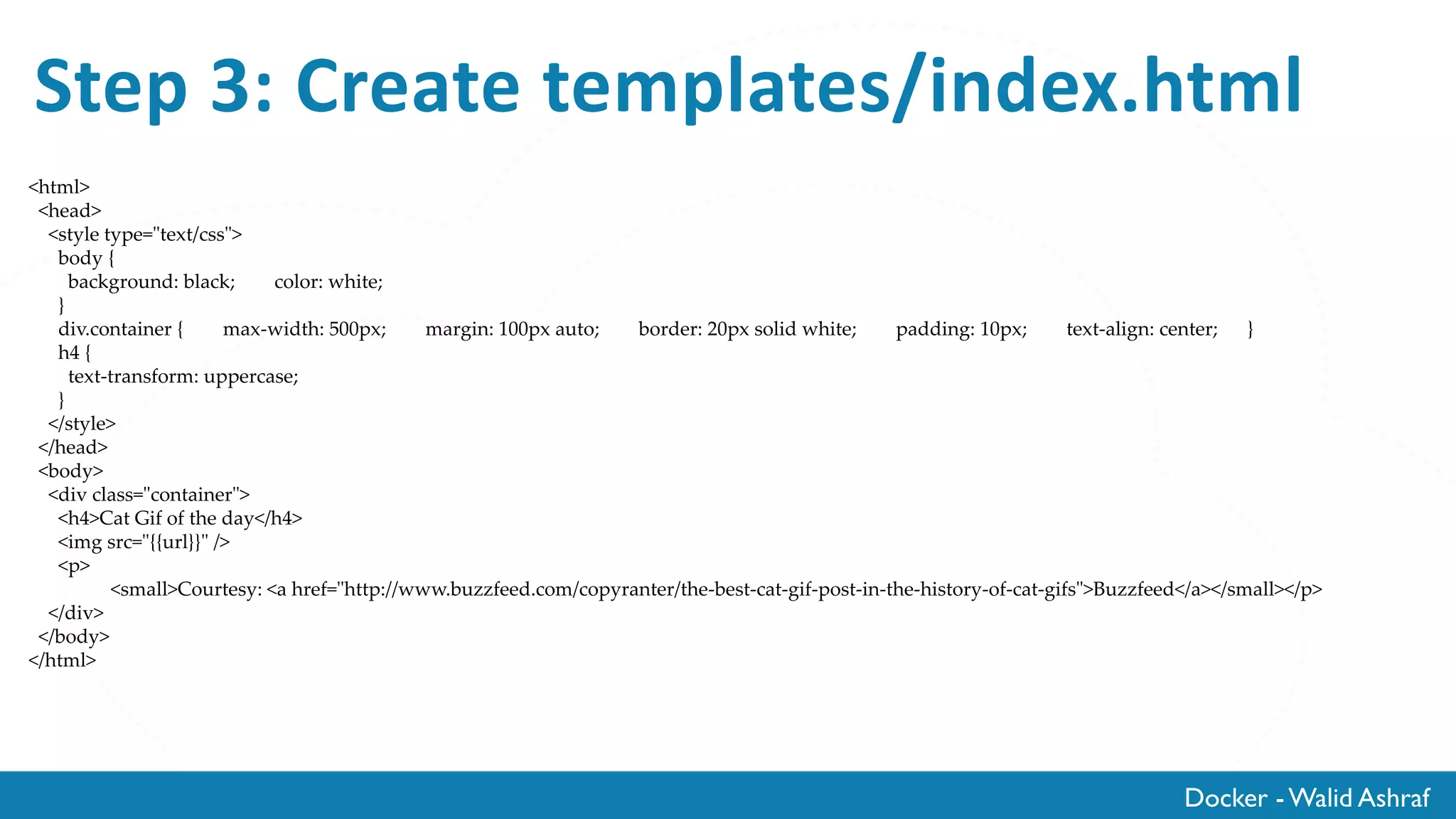
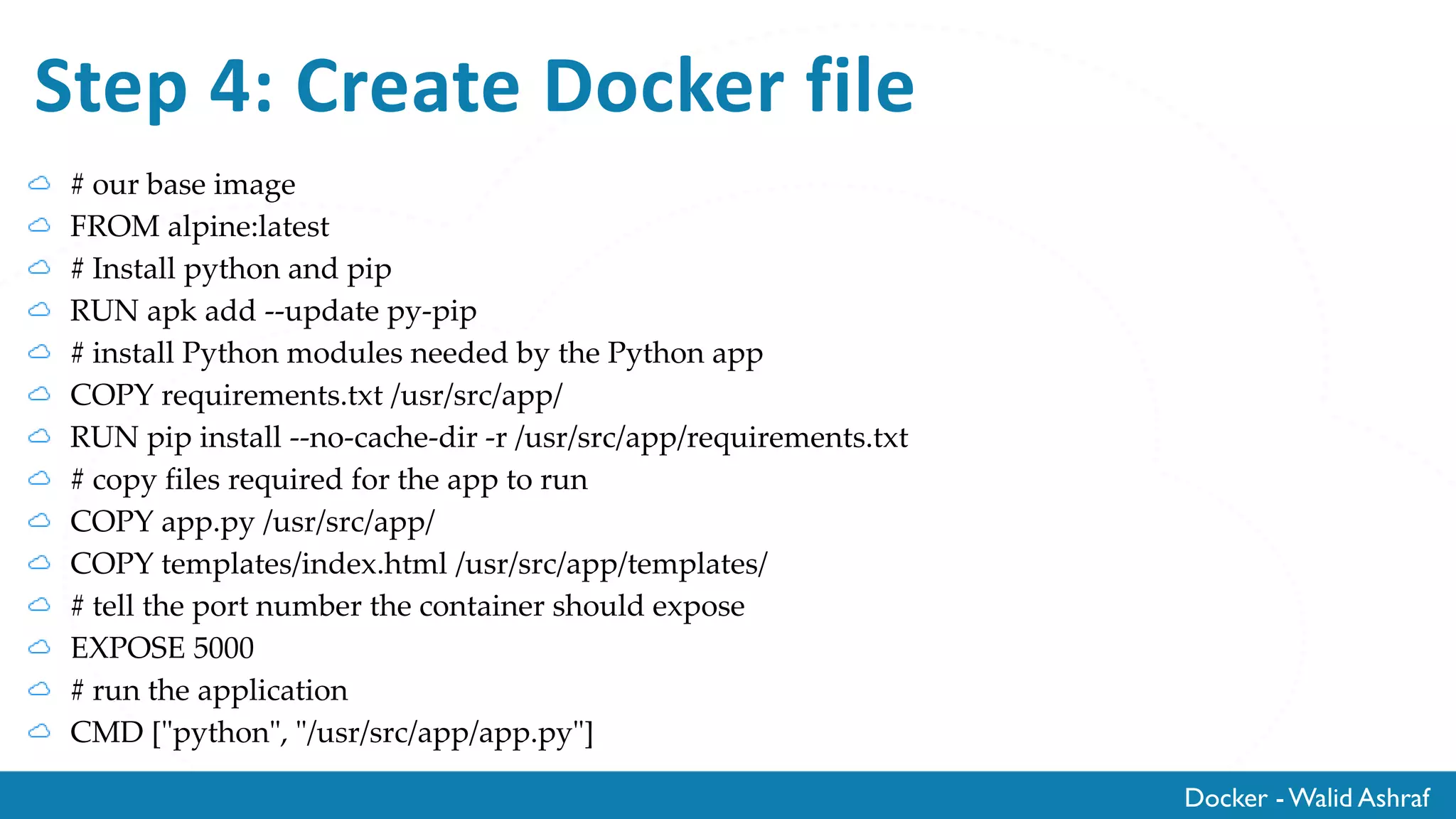
![Docker - Walid Ashraf
Step 4: Create Docker file
# our base image
FROM alpine:latest
# Install python and pip
RUN apk add --update py-pip
# install Python modules needed by the Python app
COPY requirements.txt /usr/src/app/
RUN pip install --no-cache-dir -r /usr/src/app/requirements.txt
# copy files required for the app to run
COPY app.py /usr/src/app/
COPY templates/index.html /usr/src/app/templates/
# tell the port number the container should expose
EXPOSE 5000
# run the application
CMD ["python", "/usr/src/app/app.py"]](https://image.slidesharecdn.com/3-dockerizingwebapplication-161022100324/75/dockerizing-web-application-19-2048.jpg)
